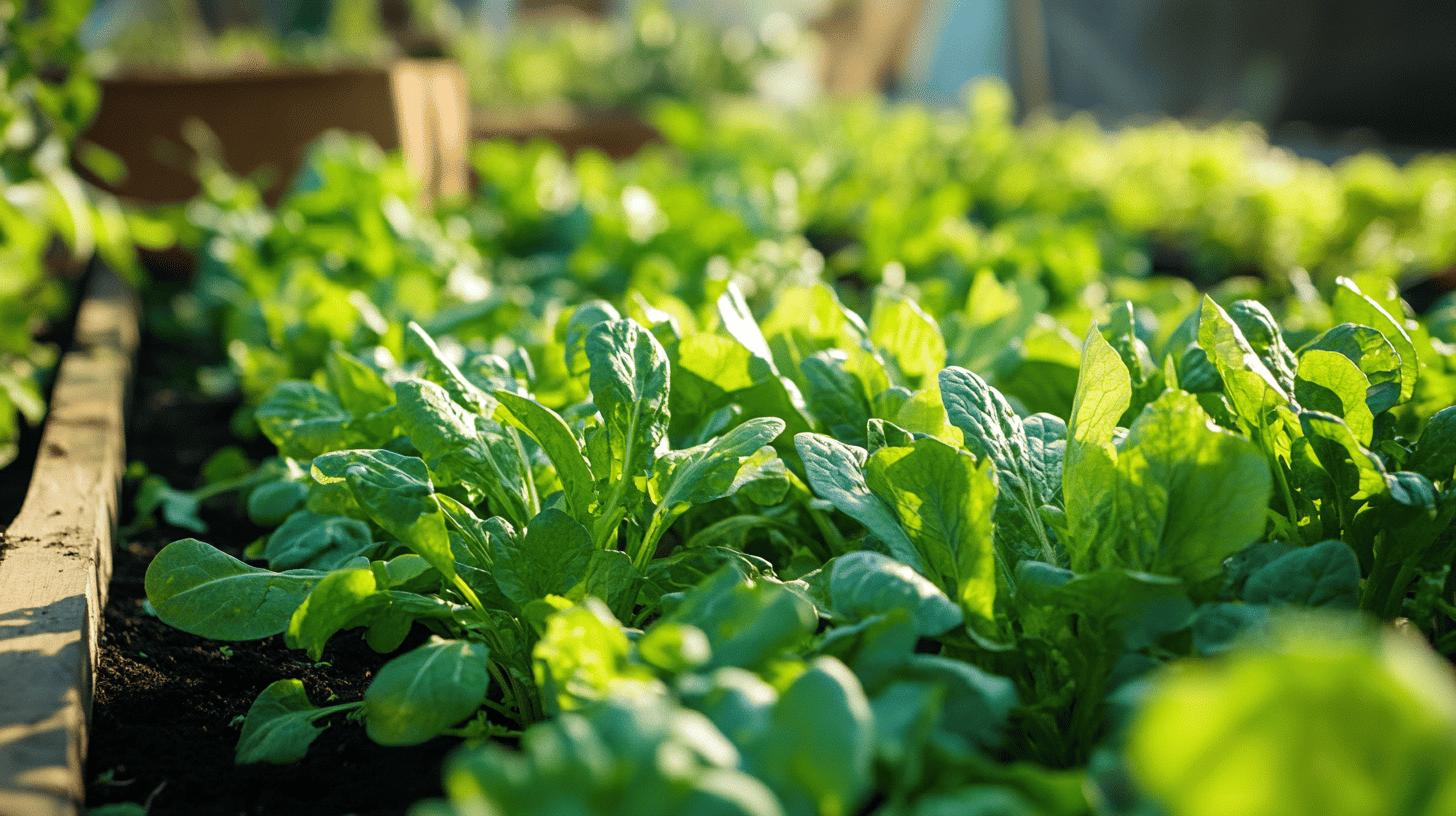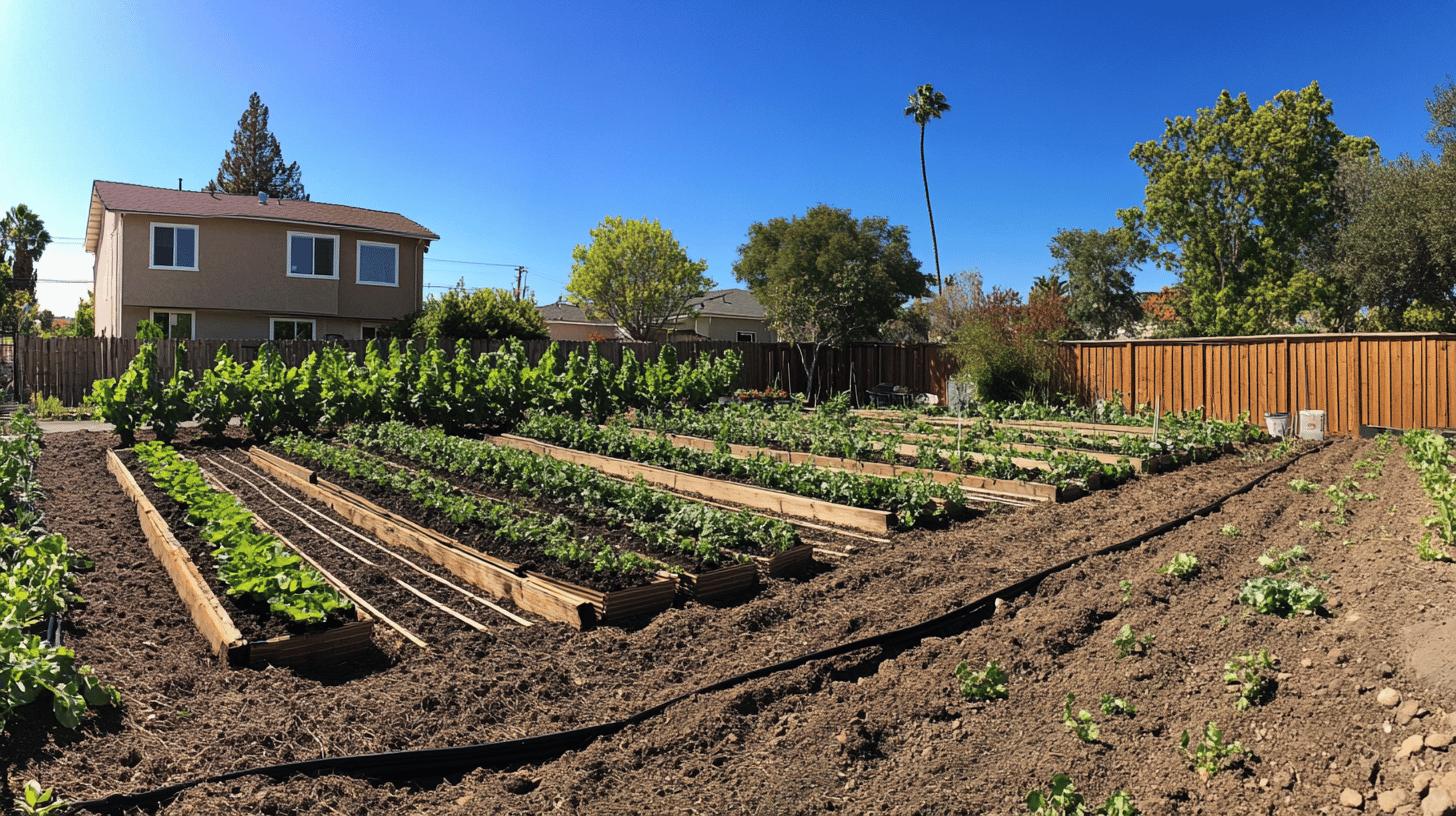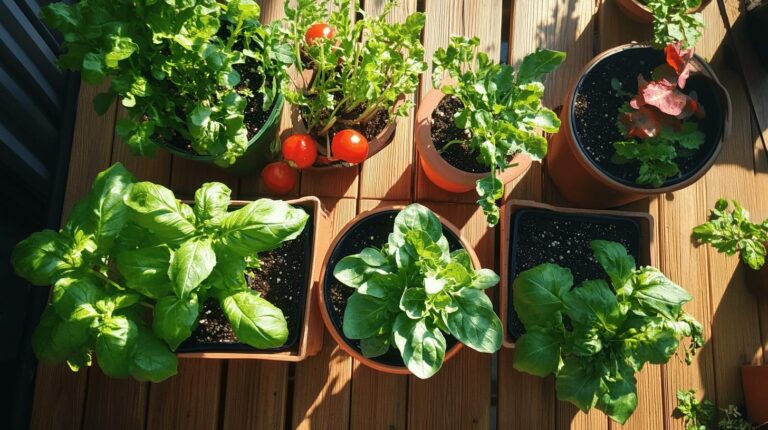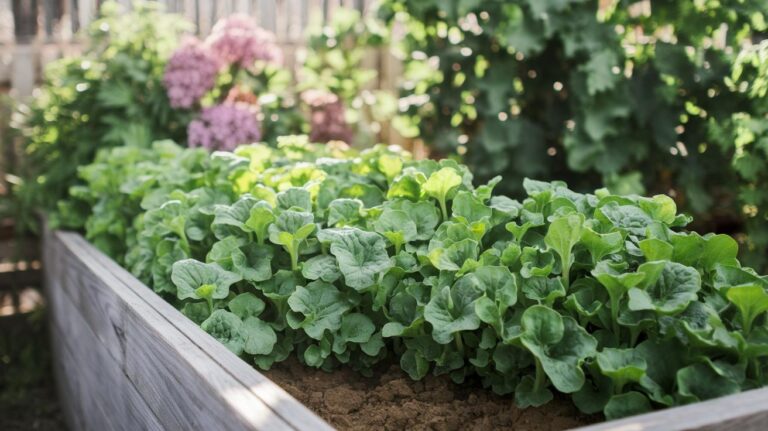How to Plant a Victory Garden Successfully
Have you ever thought about cultivating a victory garden, but aren’t sure where to start? These resilient patches of greenery were once symbols of hope and self-reliance during WW2. By planting their own fruits and vegetables, countless families alleviated wartime food shortages and boosted community morale. Now, in an age where sustainability is more important than ever, victory gardens are making a delightful comeback. For all those aspiring green thumbs, this guide will show you the essentials for planting a successful victory garden, providing practical tips for growing your own pocket of history and nourishment.
The Historical Significance of Victory Gardens
Victory gardens, also known as war gardens, made their mark during the tumultuous times of World War II. People were encouraged to cultivate their own fruits and vegetables as a way to alleviate the pressures on national food supplies. This initiative emerged from the pressing need to support the war effort by freeing up resources for troops, while simultaneously fostering a sense of self-reliance among civilians. The government provided seeds and tools, and communities came together to transform public and private spaces into flourishing gardens. This widespread movement was not just about food; it was a powerful symbol of unity and patriotism.
- Food security and self-sufficiency
- Boosted morale and community spirit
- Freed up resources for the war effort
- Reduced pressure on commercial agriculture
- Encouraged healthy eating and local produce consumption
Beyond their immediate practical benefits, victory gardens left an indelible cultural impact. They played a fundamental role in shaping public perceptions of self-sufficiency and civic duty. As a result, gardening became not just an activity, but a patriotic responsibility. The legacy of these gardens endures, reminding us of the resilience and resourcefulness demonstrated during challenging times. Today, the spirit of the victory garden is revived in sustainable gardening practices and community initiatives, emphasizing the enduring value of growing our own food.
Planning Your Victory Garden Layout

When planning a victory garden, it’s crucial to focus on the essentials that will ensure successful growth, such as sunlight and space. The garden’s location should receive at least six hours of direct sunlight daily, as most vegetables thrive under these conditions. Consider the space you have available, whether it’s a spacious backyard or a compact balcony. The layout should maximize the use of available space while avoiding overcrowding, which can lead to poor air circulation and increased risk of disease. Keep in mind the proximity to a water source, as consistent watering is vital for healthy plants. Also, think about soil quality and how you might enhance it with compost or organic matter, ensuring your garden has the nutrients it needs to flourish.
- Adequate sunlight exposure
- Efficient use of space
- Proximity to water sources
- High-quality soil
- Protection from pests and weather
- Easy access for maintenance
Consider sketching a layout of your garden to visualize how each element will fit together. This approach helps in organizing your thoughts and identifying potential challenges before planting begins. You might use graph paper or digital apps to create a more precise garden map, which can be particularly useful for larger or more complex gardens. These tools allow you to experiment with different designs and plant arrangements, ensuring you can visualize how your victory garden will come to life and function throughout the growing season. This preparation not only sets the stage for a successful garden but also enhances your ability to adapt and make changes as needed.
Essential Victory Garden Vegetables
Quick-growing vegetables are the backbone of any victory garden, especially if you’re looking to see results in a short timeframe. Radishes, salad greens, and sprouted seeds are excellent choices that can be harvested in just about a month. These crops are ideal for gardeners eager to enjoy their produce without the long wait. They also offer the added benefit of being easy to grow, perfect for those new to gardening. By selecting these fast-growing options, you can ensure a continuous supply of fresh produce while gaining confidence in your gardening skills.
| Vegetable | Growth Time |
|---|---|
| Radishes | 1 month |
| Salad Greens | 1 month |
| Sprouted Seeds | 1 month |
| Peas | 45-60 days |
| Tomatoes | 3 months |
| Summer Squash | 3 months |
When choosing vegetables for your victory garden, it’s important to consider your local climate and personal preferences. In cooler climates, you might find that crops like tomatoes and squash take a bit longer than their typical growth period, often requiring an extra month. On the other hand, if you’re in a warmer region, these vegetables might thrive more quickly. Tailoring your choices to your environment not only maximizes your garden’s productivity but also ensures that the vegetables you grow are those you’ll enjoy eating.
Soil Preparation for a Thriving Victory Garden

The foundation of any successful victory garden is its soil. Healthy soil teems with life, providing plants with the nutrients and structure they need to thrive. Quality soil not only feeds your plants but also supports a web of microorganisms that contribute to plant health. Enriching your garden soil with organic matter, like compost, enhances its fertility and helps retain moisture, which is crucial for consistent plant growth. Mulching further aids in maintaining soil temperature, suppressing weeds, and preserving moisture, creating an optimal environment for your vegetables.
- Test your soil to assess nutrient levels and pH balance.
- Add compost to enrich soil with organic matter and nutrients.
- Use mulch to retain moisture, suppress weeds, and regulate temperature.
- Incorporate organic fertilizers or amendments as needed.
- Regularly monitor and adjust soil conditions to maintain balance.
Continuously adding organic matter to your soil is key to maintaining its health over time. Organic materials like compost and well-rotted manure feed beneficial bacteria and fungi, which in turn support plant growth by breaking down nutrients into forms that plants can absorb. This process not only improves plant vitality but also boosts the soil’s ability to hold water and resist erosion. By prioritizing soil health through the regular addition of organic matter, you’ll create a thriving ecosystem that supports abundant harvests and a resilient garden.
Planting Techniques for Success in a Victory Garden
Planting techniques play a crucial role in maximizing yields and ensuring plant health in a victory garden. By employing strategic methods, gardeners can optimize space, enhance soil fertility, and protect plants from pests and diseases. These techniques not only boost productivity but also create a more resilient garden ecosystem. Methods such as companion planting and crop rotation are particularly effective, as they utilize natural synergies between plants to improve growth and yields. Companion planting involves growing certain plants together that benefit each other, while crop rotation helps maintain soil health by preventing nutrient depletion and reducing pest buildup. These strategies are essential for anyone looking to get the most out of their victory garden.
- Companion Planting: Grow plants together that benefit each other, like tomatoes and basil.
- Crop Rotation: Change plant locations each season to maintain soil health and reduce pests.
- Succession Planting: Stagger planting times for continuous harvests throughout the season.
- Intercropping: Mix plants of different heights and growth habits to maximize space.
Adapting these techniques to suit various climates and spaces can further enhance the success of your victory garden. For example, in warmer regions, selecting heat-tolerant varieties and using shade cloths can protect plants from excessive heat. In cooler climates, using row covers or cold frames can extend the growing season. Similarly, for those with limited space, such as urban gardeners, methods like vertical gardening or container gardening can be employed to make the most of available areas. By tailoring planting techniques to specific environmental conditions and space constraints, gardeners can create a thriving and productive victory garden that meets their needs.
Maintaining Your Victory Garden

Regular maintenance is the backbone of a thriving victory garden. Without consistent care, even the most well-planned garden can succumb to pests, diseases, or inadequate growth. Regularly checking on your garden allows you to spot issues early and make necessary adjustments. Watering is a critical task, as plants need a steady supply of moisture to develop properly. Equally important is weeding, which prevents unwanted plants from competing with your vegetables for nutrients and sunlight. By dedicating time to these routine tasks, you can ensure your garden remains productive and healthy throughout the growing season.
- Water plants consistently, adjusting frequency based on weather conditions.
- Weed regularly to prevent competition for nutrients and sunlight.
- Monitor for pests, using natural remedies or barriers to protect plants.
- Prune or trim plants to encourage healthy growth and remove dead or diseased parts.
- Fertilize as needed, following guidelines specific to the plant varieties you’re growing.
- Mulch to retain moisture, suppress weeds, and regulate soil temperature.
Container gardening presents its own unique challenges, particularly in maintaining moisture levels and ensuring adequate sunlight. Containers dry out more quickly than traditional garden beds, requiring daily watering, especially in hot or windy conditions. Additionally, container plants need more frequent feeding, as nutrients leach out with regular watering. Ensuring containers are placed in areas that receive the right amount of sunlight is crucial; too much can scorch plants, while too little can hinder growth. By addressing these specific challenges, you can achieve a thriving container victory garden, even in limited spaces.
Adapting Victory Gardens for Small Spaces
For those of us with limited outdoor space, container gardening offers a fantastic solution for cultivating a victory garden right at home. This method is particularly effective in urban environments where sprawling gardens aren’t feasible. Containers allow flexibility, as they can be placed on patios, balconies, or even windowsills, provided they receive sufficient sunlight. Keep in mind that container gardens typically require daily watering, because the soil in pots dries out faster than in traditional garden beds. Choosing the right size and type of container is crucial for ensuring your plants have enough room to grow. Visual aids, such as diagrams or instructional videos, can be incredibly helpful in demonstrating how to optimize space and care for container gardens effectively.
When it comes to selecting plants for small spaces, consider varieties specifically bred for compact growth. Dwarf versions of traditional crops like tomatoes, cucumbers, and peppers are excellent choices, as they provide bountiful yields without taking up too much room. Herbs like basil, parsley, and chives are also perfect for small-scale gardening, offering freshness and flavor to your kitchen. By choosing these smaller, adaptable plant varieties, you can create a productive and thriving victory garden, no matter how limited your space may be.
Modern Relevance and Benefits of Victory Gardens

Victory gardens have made a significant comeback in today’s world, proving their environmental and social value. By cultivating these gardens, we can offset greenhouse gas emissions as plants absorb carbon dioxide, making a small but meaningful impact on climate change. Growing our own produce reduces the need for transportation and packaging, leading to a decrease in our carbon footprint. Moreover, victory gardens promote sustainability by encouraging organic gardening practices, which nurture soil health and biodiversity. Socially, these gardens bring people together, fostering a sense of community as neighbors share tips, seeds, and the fruits of their labor, strengthening bonds among individuals.
- Reduces carbon footprint
- Promotes sustainable gardening practices
- Encourages community collaboration
- Provides access to fresh, organic produce
Victory gardens also play a crucial role in supporting local food systems. By growing our own food, we become less reliant on large-scale agricultural systems that can be vulnerable to disruptions. This self-sufficiency not only ensures a steady supply of fresh produce but also alleviates some of the pressure on commercial farming. Local food production contributes to food security, especially in times of crisis, and empowers individuals to take an active role in their nutrition. As victory gardens continue to gain popularity, they remind us of the power of individual action in creating a more resilient and sustainable food system.
Overcoming Challenges in Victory Gardening
Victory gardening can be a rewarding endeavor, but it does come with its set of challenges. Pests are a common issue, as they can quickly damage your crops if not managed effectively. Limited space, especially in urban environments, can also restrict the variety and quantity of plants you can grow. Additionally, climate conditions play a significant role, affecting growth rates and plant health. Adapting to these challenges is essential for a successful garden.
- Implement natural pest control methods, like introducing beneficial insects or using organic sprays.
- Utilize vertical gardening techniques to maximize limited space and increase your planting area.
- Choose climate-appropriate plant varieties and employ season-extending tools like row covers or greenhouses.
Final Words
Creating a victory garden brings together rich history with modern-day environmental benefits. By understanding how to plant a victory garden, we’re able to tap into a legacy of self-sufficiency and community spirit.
From carefully planning your garden layout to selecting the right vegetables and preparing fertile soil, every step is an opportunity to cultivate not only crops but also a deeper appreciation for what we can achieve in our backyards.
With dedication and creativity, victory gardens remind us that even small efforts can make a big difference. Here’s to a fruitful journey back to our roots!
FAQ
What are some victory garden plans available?
Victory garden plans might include traditional rows, raised beds, or container setups. Tailor plans to your available space and climate to maximize yield and efficiency.
What plants are ideal for a victory garden?
Optimal plants for a victory garden include fast-growing varieties such as radishes, lettuce, and peas, providing quick harvests and continuous yields.
How do I start a victory garden?
Start a victory garden by selecting a spot with good light and soil, sketching a plan for plant placement, and choosing resilient crops suited to your climate.
What size should a victory garden be?
The size of a victory garden depends on available space and desired crop yield, ranging from small container gardens to larger plots in yards.
What was the purpose of planting a victory garden?
Victory gardens aimed to supplement food supply during wartime by encouraging homegrown produce, infusing a sense of patriotism, and alleviating public food shortages.
What are the disadvantages of victory gardens?
Disadvantages include time and maintenance demands, possible pest issues, and the need for space and resources not readily available to all gardeners.
Where can I find Victory Garden seeds?
Victory Garden seeds are accessible in stores, online seed suppliers, and community seed swaps, offering a variety of vegetables historically grown in victory gardens.







